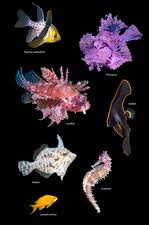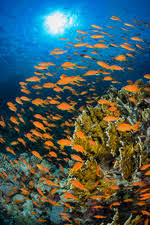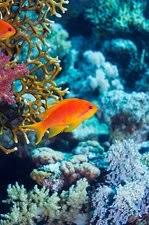The Dragon in Major Sports Events in China: Symbolism, Legacy, and Cultural Significance

The dragon, an ancient and revered symbol in Chinese culture, has always represented power, strength, and good fortune. As a mythical creature deeply embedded in the cultural and spiritual fabric of the nation, it is no surprise that the dragon has found its place in major sports events across China. From traditional festivals to the modern-day sporting spectacles, the dragon remains a powerful symbol in China’s sports landscape, representing national pride, unity, and the pursuit of excellence.
This article will explore the significance of the dragon in major sports events in China, delving into its historical and cultural symbolism, its role in modern sports ceremonies, and the ways in which it influences the country’s approach to sport and athleticism.
1. The Dragon as a National Symbol in Chinese Culture
In Chinese culture, the dragon is much more than just a mythical creature. It symbolizes imperial power, strength, vitality, and good fortune. For thousands of years, it has been associated with the emperors of China, who were considered the “Sons of Heaven” and believed to possess the dragon’s power. The dragon also symbolizes the harmony of nature, as it is believed to control water, rain, and storms, elements critical to agricultural success.
The dragon is often depicted as a creature with the body of a serpent, the antlers of a deer, the claws of an eagle, and the face of a camel, among other features. This composite of various animals highlights the dragon’s role as a powerful and omnipotent figure in Chinese mythology. It is also closely tied to the concept of the Yin and Yang, representing balance and the interconnectedness of all things.
In the realm of sports, the dragon is a symbol of resilience, overcoming challenges, and achieving greatness. Its association with strength and power makes it a natural emblem for competitive sports, where athletes are often called upon to demonstrate these very qualities. As China’s sporting events have evolved over the years, the dragon has remained a prominent symbol in various forms.
2. The Dragon in Traditional Chinese Sports Festivals
Throughout history, traditional Chinese festivals and cultural events have been deeply intertwined with sporting activities, many of which feature the dragon as a central figure. One of the most famous and visually striking examples of the dragon in traditional sports events is the Dragon Boat Festival.
The Dragon Boat Festival (also known as Duanwu Festival) has been celebrated for over 2,000 years. Held on the fifth day of the fifth month of the lunar calendar, the festival is marked by dragon boat races, a thrilling competition where teams of rowers race in long, narrow boats shaped like dragons. The festival is not only a celebration of Chinese culture and traditions but also a demonstration of unity, teamwork, and the strength of the human spirit—qualities that are symbolized by the dragon.
In the dragon boat races, each boat is adorned with a dragon’s head at the bow and a dragon’s tail at the stern. These boats are often elaborately decorated with colorful scales, eyes, and other features that bring the dragon to life, transforming the event into a moving spectacle of speed, skill, and tradition. The races are a testament to the endurance and determination required in the face of adversity, much like the qualities attributed to the dragon itself.
Beyond the boats, the festival also involves rituals, performances, and ceremonies that further highlight the dragon’s significance. People often hang up dragon-shaped decorations, and the symbolism of the dragon is pervasive throughout the festival, from the food served to the clothing worn. The event brings communities together to celebrate their cultural heritage, with the dragon serving as the symbolic figurehead of the occasion.
3. The Dragon in the Beijing 2008 Summer Olympics Opening Ceremony
One of the most significant moments in modern Chinese sports history was the Beijing 2008 Summer Olympics. The opening ceremony, held on August 8, 2008, was an extravagant display of China’s history, culture, and achievements, and the dragon played a central role in this spectacular event. The ceremony, directed by Zhang Yimou, was a celebration of China’s rich cultural heritage and a demonstration of its newfound prominence on the global stage.
The dragon was featured prominently in the opening ceremony as both a physical and symbolic presence. The most dramatic representation of the dragon was seen in the form of a giant floating dragon that appeared during the procession of athletes. This dragon, made from a combination of traditional Chinese design elements and modern technology, was a visual marvel. It symbolized China’s historical achievements and its future aspirations, embodying the strength, spirit, and resilience that the country hoped to demonstrate during the Games.
As the athletes entered the Bird’s Nest Stadium, the dragon appeared as part of a larger performance that combined dance, music, and lighting to create a dynamic and breathtaking visual experience. The dragon, as a symbol of power and pride, was an appropriate figure for this moment, showcasing China’s ambition to host a successful Olympic Games and to demonstrate its growing influence in the global community.
The use of the dragon in this context served not only as a tribute to China’s cultural heritage but also as a powerful reminder of the country’s long-standing tradition of strength and excellence in sports. It reinforced the idea that China’s modern sporting achievements were built upon a foundation of historical and cultural significance.
4. The Dragon in the Chinese New Year Sports Events
The Chinese New Year, also known as the Spring Festival, is the most important holiday in China, and it is celebrated with various sporting events and competitions across the country. The dragon plays an integral role in these festivities, particularly in parades, cultural performances, and sports tournaments that take place during the holiday season.
In many cities across China, dragon and lion dance performances are held to celebrate the New Year and to bring good luck for the upcoming year. The dances involve large, intricately designed dragon and lion costumes that are manipulated by teams of performers. These performances require great coordination, skill, and teamwork—values that are also essential in competitive sports.
The dragon is often depicted as a lively, serpentine figure, winding and twisting through the streets as it is carried by performers. This dynamic movement symbolizes vitality, flexibility, and strength—qualities that are celebrated in sports competitions as well. As the dragon dances through the streets, it is believed to bring prosperity and drive away evil spirits, symbolizing the triumph of good over evil and the arrival of a prosperous new year.
In addition to the traditional dances, many cities also host sports tournaments during the Chinese New Year, including martial arts competitions, dragon boat races, and athletic events. These activities serve as a reminder of the dragon’s deep cultural ties to sports and the ideals of strength, unity, and success.
5. The Dragon in Contemporary Sports Events: National Pride and Unity
In recent years, the dragon has continued to be a prominent symbol in major sports events across China, especially in the context of international competitions. As China has become a global powerhouse in sports, the dragon has evolved from being a symbol of imperial authority to representing national pride and unity.
One of the most significant examples of the dragon’s role in modern sports events is its presence at the Asian Games. China has hosted the Asian Games multiple times, most notably in 1990 (Beijing) and 2010 (Guangzhou), and the dragon has always played a prominent role in the opening and closing ceremonies. At these events, the dragon represents China’s aspirations for regional dominance in sports and its desire to showcase its strength on the global stage.
The dragon’s symbolism is also seen in the uniforms worn by Chinese athletes. In many international competitions, such as the Olympic Games and the World Championships, Chinese athletes often wear uniforms featuring the dragon, symbolizing their connection to the nation’s rich cultural heritage and their commitment to achieving greatness in their respective sports. The dragon’s presence on the uniforms serves as a reminder of the pride and honor associated with representing China in global competitions.
Additionally, the dragon has been integrated into sports marketing and branding, with companies often using dragon imagery to promote sporting events, teams, and products. This further reinforces the connection between the dragon and sports in China, linking the country’s ancient traditions with its modern sporting identity.
6. The Dragon in the Future of Chinese Sports
As China continues to develop its sporting infrastructure and host major international sporting events, the dragon will undoubtedly remain a key symbol of the country’s sporting identity. The dragon’s deep roots in Chinese culture, its association with power and resilience, and its representation of national pride will ensure that it continues to play a central role in major sports events in China.
From the Dragon Boat Festival to the Olympics, from national sporting events to international competitions, the dragon will remain a constant presence, reminding both athletes and spectators of the strength, unity, and determination that define Chinese sports. As China continues to strive for excellence in athletics, the dragon will continue to symbolize the nation’s enduring spirit of competition and its aspirations for victory on the global stage.
Conclusion
The dragon has long been a symbol of power, strength, and resilience in Chinese culture, and its significance extends far beyond the realms of mythology and imperial symbolism. In the world of sports, the dragon represents the pursuit of excellence, the spirit of competition, and the unity of the Chinese people. From traditional festivals to modern sporting spectacles, the dragon continues to inspire and energize China’s athletes, spectators, and fans alike. As China continues to rise as a global sporting power, the dragon will undoubtedly remain a key symbol of the country’s sporting legacy and its future ambitions on the world stage.








